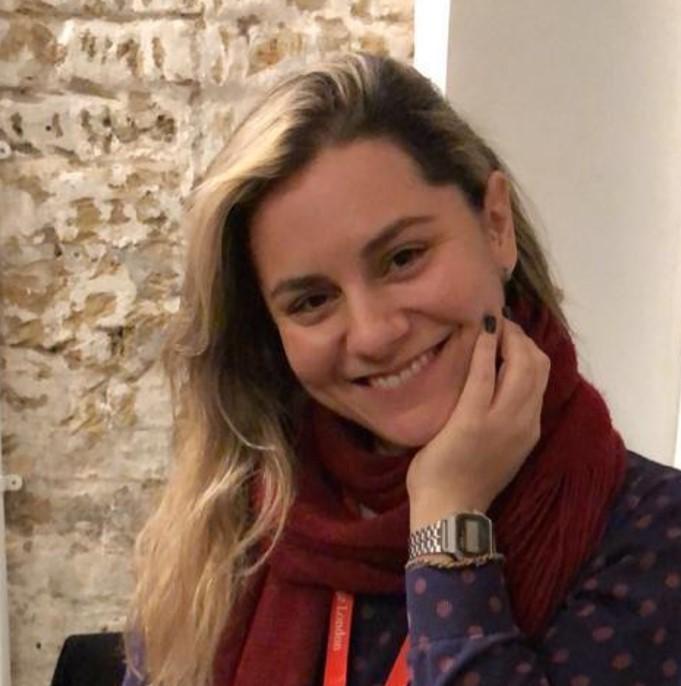
For Fabiana Dias, PhD, conducting research into the mechanisms of pain and itch is both a never-ending adventure and an eternal challenge. In this week’s “Spotlight” interview, the recent addition to the lab of Yong Chen, PhD, talks to us about her current research to understand how skin cells communicate and to develop possible therapies for joint injuries. She also shares how research makes her fulfilled personally and professionally, and discusses her love of visiting new countries when she’s not at Duke.
What are your current responsibilities within the Chen Lab? What does a typical day look like for you?
As a Postdoc associate at the Chen Lab, my typical working day starts early in the lab. My activities in the lab depend on my experiment schedule. I can say that you probably will see me testing animal behaviors, collecting and preparing tissues for biochemical analyses, analyzing data, discussing data with my co-workers, organizing my experiments schedule, preparing presentations, reading papers, writing reports, learning new techniques and sharing my experience too. The Chen Lab’s team is an integrative group and my co-workers are helpful, friendly and kind. I’m proud to be part of the team now. Doing what I love and having a good work environment makes things easier during the workday.
What research projects are you working on at the moment, and how will they help us understand the brain and nervous system?
We are focused on having a better understanding of pain and itch mechanisms at the Chen Lab. I’m working on two different projects at the moment. Although recent studies have implicated that skin cells also participate in sensory transduction, the underlying mechanism by which skin cells and the crosstalk between skin cells and sensory neurons to generate unpleasant sensations, such as pain and itch, remains poorly understood. The aim of the first project is investigating whether a calcium (Ca2+)-activated nonselective ion channel plays a critical role in skin cells-sensory neurons crosstalk in these sensory modalities.
Collaborating with other groups, the Chen lab has recently identified that the mechanosensitive PIEZO-1 and -2 ion channels, both expressed in articular cartilage, are critical for the mechanotransduction of chondrocytes in response to injurious mechanical stress. Inhibition of these channels protects chondrocytes from cell death due to cartilage injury. The aim of the second project is understanding the mechanisms of synergistic functioning of Piezo1/2 in chondrocyte mechanotransduction under pathological conditions, so that patients suffering from joint pain conditions may benefit from therapeutics that target PIEZO1/2 ion channels.
You earned both your master’s degree and your doctorate in pharmaceutical sciences at the Federal University of Rio de Janeiro. What was the focus of these studies, and how does your education in this field inform your current work?
I have been working with experimental models of chronic pain and TRP channels since my master’s degree. These studies were mainly focused on understanding the role of TRPV4 in painful diabetes neuropathy and TRPM3 role in osteoarthritis. We observed that the pharmacological blockage of the TRPV4 channels in mice submitted to the experimental model of painful diabetes neuropathy prevented and reversed the mechanical allodynia, without changing physiological parameters such as, body temperature, body weight, baseline threshold and motor activity. Also, using conditional knockout mice, we observed that the TRPM3 channels are essential for chronic pain associated with two different models of joint pain. Therefore, my background and experience with chronic pain and ion channels has helped me to advance in my current projects at Duke.
What plans do you have for your future? If you could have any job in the world, what would it be?
If I could have any job in the world, I would choose the job I have now. A few years ago, I realized that I really like doing what I do. Being a researcher makes me feel fulfilled as a professional and as a person. Sharing my knowledge with people and talking to them about what I do at work makes me feel proud about my professional journey. I expect in the future to be doing the same - to be working in research, improving my knowledge and sharing my experience with people.
What’s one thing about neurological research that really interests or excites you?
Understanding the somatosensory system is challenging. As much I know, as much I need and I want to understand, there is always something else to explore. It’s like a never-ending adventure, and I always want to learn more. That’s what makes me excited about it. In particular, I’m curious about behavior tests. I’ve been working with different behavioral tests in mice for the last 8 years, and it’s always interesting to observe how mice act and behave after a stimulus or situation. For example, in pain behavior tests, we mainly evaluate the pa- withdraw threshold, but each mouse still has their own particular characteristic.
What other passions or hobbies do you have outside of the Department?
I really like traveling and visiting new places. I believe that learning about new cultures is one of the best ways for personal growth and improvement. I’ve been to 19 countries so far - and counting. One of the most incredible experience I had traveling was watching the northern lights in Norway and visiting the Cliffs of Moher in Ireland. Also, as a girl from Rio - Brazil, I do like going to the beach, enjoying the nature and outdoors activities, hanging out with my friends and spending time with my family.

Dias enjoys the Northern Lights in Norway in the photo above, and below, the view of Sugar Loaf in Rio de Janeiro.
